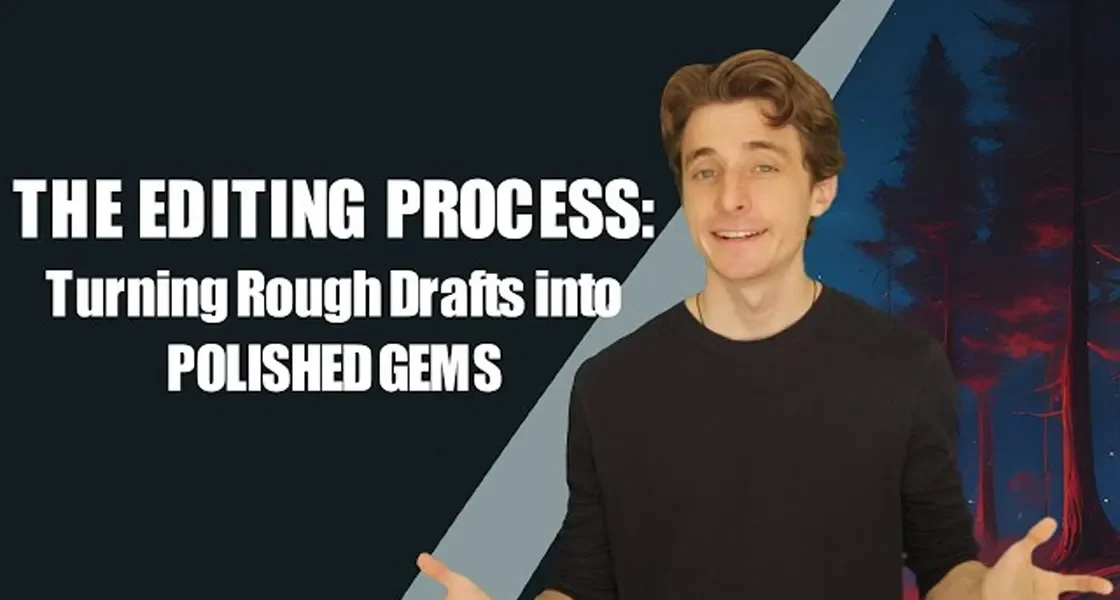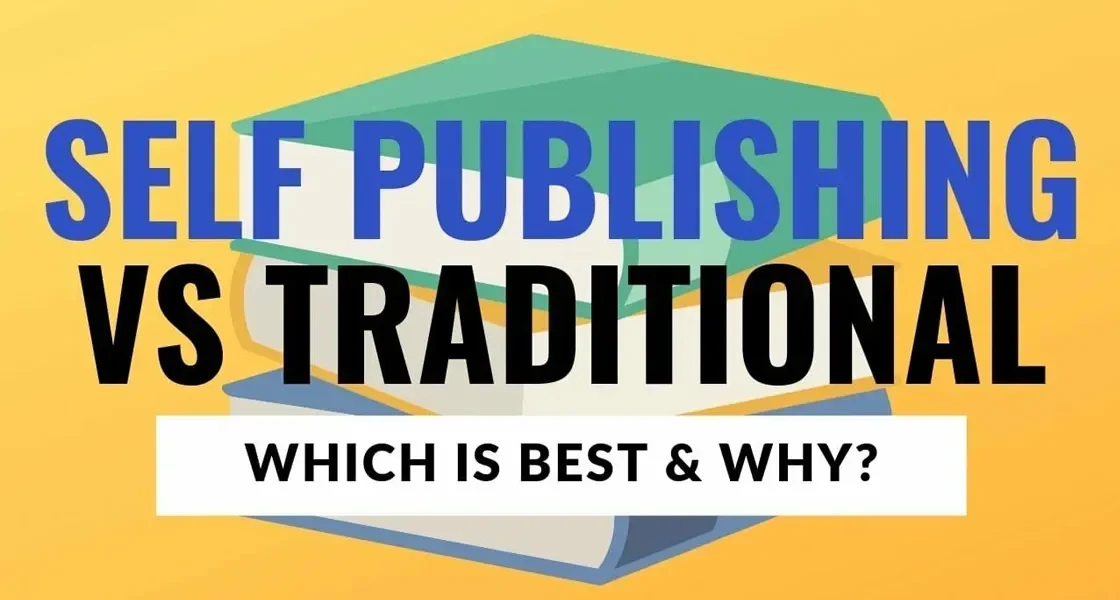
Table of Contents
Toggle10 Steps to Effortless Creation: Master the Art of Writing a Book:
Step into the realm of writing, where your thoughts crystallize into words and worlds unfold on paper. It’s a big deal, but it can also be pretty tough. The dream is universal: penning a book. But why does it matter? Simply put, it’s a way to make sense of the world, to communicate ideas, and to leave a mark that says, “I was here.” Yet, the path is often filled with obstacles, confusing turns, and steep climbs.
That’s where this guide comes in. Think of it as a map, showing you every twist and turn on your journey to creating a masterpiece ebook. No longer must you wander aimlessly through the labyrinthine corridors of narrative, character development, or plot intricacies.
Our goal here is to make things easy. This is not about obscure theories or abstruse jargon. It’s about simplifying the complex, breaking it down into digestible elements step by step.
What’s the payoff? Picture your book in a reader’s hands. Imagine the joy, the tears, the laughter your words could bring. That’s your gift to the world, your legacy.
And don’t worry, this isn’t just a set of instructions. It’s a conversation. We’ll talk, debate, and learn together, ensuring that your journey is not just productive, but also engaging.
So, let’s embark on this expedition. Sharpen your pencils, uncap your pens, and open your laptops. Your book awaits, and it’s time to master the art of its creation through peerless Ghostwriting service.
- Introduction – History
- The Pre-Writing Phase
- Developing Characters
- Constructing the Plot
- Setting and World-Building
- Dialogue
- Pacing and Rhythm
- Editing and Revision
- Beta Readers and Feedback
- Publishing Avenues
Master the Pre-Writing Phase to Unlock Your Writing Potential

The pre-writing phase isn’t merely a preamble; it’s the foundation of any good piece of writing. Often overlooked, this initial step can mean the difference between coherence and chaos. Now, let’s zero in on two crucial elements: research and the creation of a dedicated writing space.
First, let’s talk about research. Imagine you’re a ship’s captain. Without a compass or a map, you’ll drift aimlessly. Research serves as your navigational tools. It informs you, gives your argument substance, and most importantly, lends credibility to your words. Your audience trusts you more when they see you’ve done your homework. So before you jot down the first word, dig deep. Read extensively, take notes, and understand your subject like the back of your hand.
Ah, but where to conduct this research and write? That brings us to the second point: creating a writing space. This is not just a physical area; it’s a psychological one too. Select a spot devoid of distractions, where you can hear your thoughts. Make it inviting yet functional. The ambiance matters. If you’re comfortable, your mind is free to wander within the confines of your subject matter, making the writing process less of a chore and more of an exploration.
Don’t underestimate the power of ambience. A well-placed lamp, an ergonomically designed chair, or even a cup of your favorite brew can set the stage. You’re not just creating a space; you’re setting a mood. A good atmosphere cultivates focus, and focus is the wellspring of good writing.
To tie it all together, consider the pre-writing phase as a mission-critical stage in your writing endeavor. Research equips you with the knowledge to tackle your topic confidently. A dedicated writing space, on the other hand, becomes your sanctuary for translating this knowledge into coherent, impactful writing.
Don’t think of this phase as optional. It’s not a luxury; it’s a necessity. Just as a well-prepared athlete performs better on the field, a well-prepared writer crafts prose that resonates with readers. So invest time in the pre-writing phase; your finished product will thank you for it.
In short, take the pre-writing phase seriously. Research diligently and create a conducive writing environment. The rewards will not just be apparent; they will be deeply felt. Your writing won’t just sing; it will soar.
Craft Unforgettable Characters: Realism and Rivalry Explained

In the world of storytelling, characters are the heartbeat. They move the plot, elicit emotions, and bring your narrative to life. Today, let’s delve into two key elements that help make characters unforgettable: crafting realistic personalities and understanding the role of antagonists.
First up, realistic personalities. People are complex, full of quirks and contradictions. Your characters should reflect that. Dig deep into their motivations, fears, and dreams. Don’t just tell readers that your protagonist is brave; show it through their actions, dialogue, and the choices they make. Make them flawed, but also give them the ability to grow. A static character is a forgettable one.
Now, let’s pivot to the unsung heroes of conflict and tension: antagonists. Far too often, these characters are reduced to mere obstacles, simple foils to the protagonist. That’s a missed opportunity. An antagonist is not necessarily a villain; they’re someone who opposes the protagonist’s goals. And like your hero, they deserve a well-rounded personality. Understand their motivations; maybe they even have a point. This added depth turns them into a mirror against which your protagonist can better see themselves.
Why do these two aspects matter so much? Realistic personalities make your characters relatable, which, in turn, makes your story engaging. An intricate antagonist adds layers of complexity, enriching your narrative and driving it toward a climax that feels both unexpected and inevitable.
So, as you sit down to write, spend quality time developing your characters. Create dossiers that outline their histories, traits, and nuances. And remember, antagonists need love too. Spend as much effort on them as you would on your protagonist.
To sum up, don’t shortcut on character development. Fully fleshed-out personalities and nuanced antagonists don’t just populate your story; they elevate it. They turn a simple tale into an engrossing journey, one that will keep your readers hooked from the first page to the last.
Plot Your Course Navigating Outlines, Free-Writing, and Three Acts

Ah, constructing the plot, the backbone of any story that keeps your readers invested and turning the pages. Let’s focus on two crucial approaches: outlining versus freewriting and the tried-and-true three-act structure.
First, remember to describe. It’s the outline of your story, a map you draw up before you set off on your journey. It’s like knowing you’re going from New York to Los Angeles and planning stops along the way. Outlines establish your story arc so you know where you’re going. For example, if you’re writing a mystery, you’ll probably write down key clues, suspects, and how your detective unravels it all.
And what about free writing? Imagine being handed the keys to a car and told, “Just drive.” It’s free writing. You let your characters guide you, straying from planned routes and discovering unmarked scenic routes. This approach offers a feeling of surprise but can also lead to detours and dead ends.
Next, we visit the three-act structure. Think of it like a play: the first act introduces characters and conflicts; The second act adds layers, complexities, and setbacks; The third act brings resolution. In a love story, the first act might show the meeting of the protagonists, the second act their obstacles, and the third act their eventual union or separation.
Outlining and freewriting both have merits. The description provides control; free writing gifts spontaneity. Use one or the other as your story requires. Whatever your approach, the three-act structure can serve as a reliable scaffold, ensuring that your story has a beginning, middle, and end that satisfies your reader.
In a nutshell, plotting is not about rigid formulas but rather about intelligent choices. Understand the tools at your disposal (outlining, free writing, three-act structure) and use them wisely to create a plot that not only makes sense but resonates.
Craft Authentic Universes That Resonate with Readers

Setting and world-building are cornerstones of storytelling, providing the landscape upon which characters roam and plots unfold. Authenticity in these domains is paramount. Without it, the audience senses something off—akin to a painting with colors that clash. An authentic world grants a narrative weight, making it resonate with viewers or readers long after they’ve turned the final page or watched the final scene.
Creating immersive worlds involves more than a few brushstrokes of description. It’s akin to being an architect, laying out the streets, defining the culture, and setting the laws that govern the land. Attention to the fine details—how people speak, what they eat, the traditions they follow—can be the difference between a forgettable backdrop and a world that feels as real as our own.
To achieve this, research becomes your close companion. Dive into books, articles, and firsthand accounts that can breathe life into your fictional universe. Sometimes, the real world can offer gems that make your imagined realm sparkle with believability.
The balance between originality and credibility is delicate but crucial. It’s tempting to let your imagination run amok, but a world also needs rules. Even fantasy realms grounded in magic have limitations, laws of physics tweaked but not broken. This is what allows your audience to suspend disbelief.
In sum, the pursuit of authentic, immersive worlds is an endeavor that demands both creativity and discipline. The rewards, however, are worth the effort—a story that lives, breathes, and captivates, echoing in the halls of imagination long after the tale is told.
The Art of Dialogue: Making Characters Speak to the Soul

The heartbeat of a story. It’s how characters communicate, share their thoughts, and show their personalities. Good dialogue makes them feel real, like people you could talk to. It’s key for making your story relatable and engaging.
To craft natural conversations, listen to real people. Pay attention to the rhythm, the pauses, and the words they choose. You don’t need perfect grammar in dialogue; you need authenticity. Let characters interrupt each other, use contractions, and even make mistakes. It makes them human.
But writing dialogue isn’t just mimicry. Techniques like subtext can add layers to a conversation. Subtext is what’s not being said, the unspoken emotions or motives. This is where your reader becomes an active participant, filling in the gaps and making connections.
Remember, dialogue is a tool. It moves the plot forward, reveals character, and keeps readers hooked. Done right, it can make your story come alive, turning mere words on a page into a world that breathes.
Mastering the Pulse of Your Story Through Pacing and Rhythm

Pacing and rhythm are the pulse of your story. They control the speed at which events unfold, guiding how readers experience time and emotion. Just like in music, a good mix of fast and slow beats can make all the difference. Too much action, and your readers might get exhausted. Too much reflection, they could lose interest.
Balancing action and reflection is vital. Action scenes keep readers at the edge of their seats. But you also need quieter moments where characters think, react, and grow. These reflective pauses let your readers catch their breath and make emotional connections with the characters.
Effective pacing isn’t one-size-fits-all. Techniques like short sentences can quicken the pace, while long, descriptive passages can slow it down. Knowing when to speed up or slow down depends on the mood you want to create. Pay attention to your story’s needs. Maybe it’s a chase scene that needs to be fast, or a romantic moment that calls for a slower pace.
So, to sum it up, mastering pacing and rhythm is key to crafting a compelling story. Nail the balance between action and reflection, use techniques wisely, and you’ll keep your readers turning pages, deeply invested in your narrative.
Turning First Drafts into Polished Gems: The Magic of Editing

Editing and revisions are where your story truly takes shape. Think of your first draft as a block of marble. It’s rough and unrefined, but it’s the essential material you need to start sculpting a masterpiece.
The role of the first draft is to get your ideas down. Don’t worry if it’s not perfect; that’s not its job. The first draft is where you can make mistakes, try out different paths, and let your creativity flow freely. The aim is to finish it, not to make it flawless.
Now, onto revisions. This is the stage where you chisel away at that block of marble. Cut out the unnecessary parts, refine your dialogue, and polish your descriptions. Take a break between the first draft and revisions to gain some perspective. It’ll help you see what needs fixing.
Revision strategies can vary, but some classics work for almost everyone. Read your work out loud to catch awkward phrases. Get feedback from others to see your story from a different angle. Use this input to fine-tune your narrative.
So remember, your first draft lays the foundation, but editing and revisions turn it into a home. It’s an ongoing process, but one that transforms good stories into great ones.
Harnessing Beta Reader Magic: Perfecting Your Story with Feedback
Beta readers and feedback are your secret weapons in making your story shine. Choosing the right beta readers is like assembling a team of trusted advisors. Look for folks who are familiar with your genre, honest but constructive, and genuinely interested in helping you succeed.
When it comes to selecting beta readers, diversity is key. Different perspectives can uncover blind spots you might have missed. But remember, not all feedback is equal. Consider which suggestions align with your vision and resonate with multiple readers.
Now, let’s talk about acting on feedback. It’s not about blindly following every suggestion; it’s about identifying patterns. If multiple beta readers mention an issue, it’s likely something that needs attention. Prioritize the changes that enhance your story’s overall impact.
Receiving feedback can be tough, but remember, it’s a gift. It’s a chance to refine and elevate your work. Embrace the process with an open mind, and your story will emerge stronger, more engaging, and ready to captivate your audience.
Navigating the Traditional and Self-Publishing World

Navigating the world of publishing is like choosing a path through a dense forest. Two primary avenues stand before you: traditional publishing and self-publishing.
Traditional publishing involves seeking a literary agent or submitting your manuscript directly to publishers. It’s a rigorous process that often requires patience and perseverance. Yet, if your manuscript finds a home with a traditional publisher, you gain access to their resources, distribution networks, and expertise in bringing your book to readers.
On the other hand, self-publishing offers more control. You become the captain of your literary ship, responsible for every aspect of the process. This route is quicker, but it demands meticulous planning. You need to handle editing, cover design, and marketing. Platforms like Amazon Kindle Direct Publishing (KDP) make self-publishing accessible, but success depends on your dedication and marketing savvy.
Now, let’s discuss tips for submission. When approaching traditional publishers, research their submission guidelines carefully. Tailor your query letter and manuscript to each publisher’s specific requirements. Polish your work until it shines because first impressions are crucial.
In self-publishing, invest in professional editing and cover design. Write a compelling book description and engage in strategic marketing. Building an author platform through social media can also help you reach your target audience.
Ultimately, the path you choose depends on your goals and preferences. Both avenues have their pros and cons, but with determination and the right strategy, you can find success in the world of publishing.
Conclusive Thoughts:
Understanding publishing dynamics is crucial for aspiring writers. Recognize differences between traditional and self-publishing to make informed choices. Traditional offers support but patience, while self-publishing grants autonomy with planning and marketing responsibilities. Your decision should match your vision.
As you embark on your writing journey, remember that knowledge is your most valuable asset. Continue researching, refining your craft, and seeking feedback from beta readers. Whether you choose traditional publishing or self-publishing, always strive for excellence in your work.
So, what’s your next step? It’s time to put your newfound knowledge into action. Begin by researching publishers or self-publishing platforms that align with your genre and style. Craft your query letter or prepare your self-publishing strategy. The key is to keep writing, keep learning, and keep pursuing your passion for storytelling. Your journey as a writer has just begun.
FAQs
Absolutely! The steps are designed to simplify the process, guiding even novice writers. Take one step at a time, and you’ll conquer your writing journey.
Writer’s block happens. When it does, step away briefly, refocus, or skip to the next step. Sometimes, the solution emerges as you continue your journey.
Prioritize your writing. Dedicate small, consistent blocks of time daily or weekly. You’ll be amazed at how steady progress adds up.
Self-doubt is common. Remember, your first draft doesn’t need to be perfect. Writing is rewriting. Trust the process and your skills will improve.
Set clear goals and rewards for each step completed. Join a writing group for accountability and encouragement. Your passion for your story will fuel your motivation.